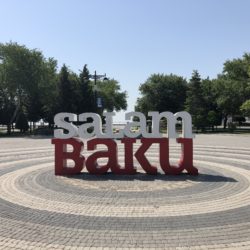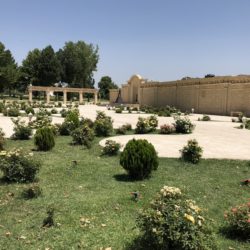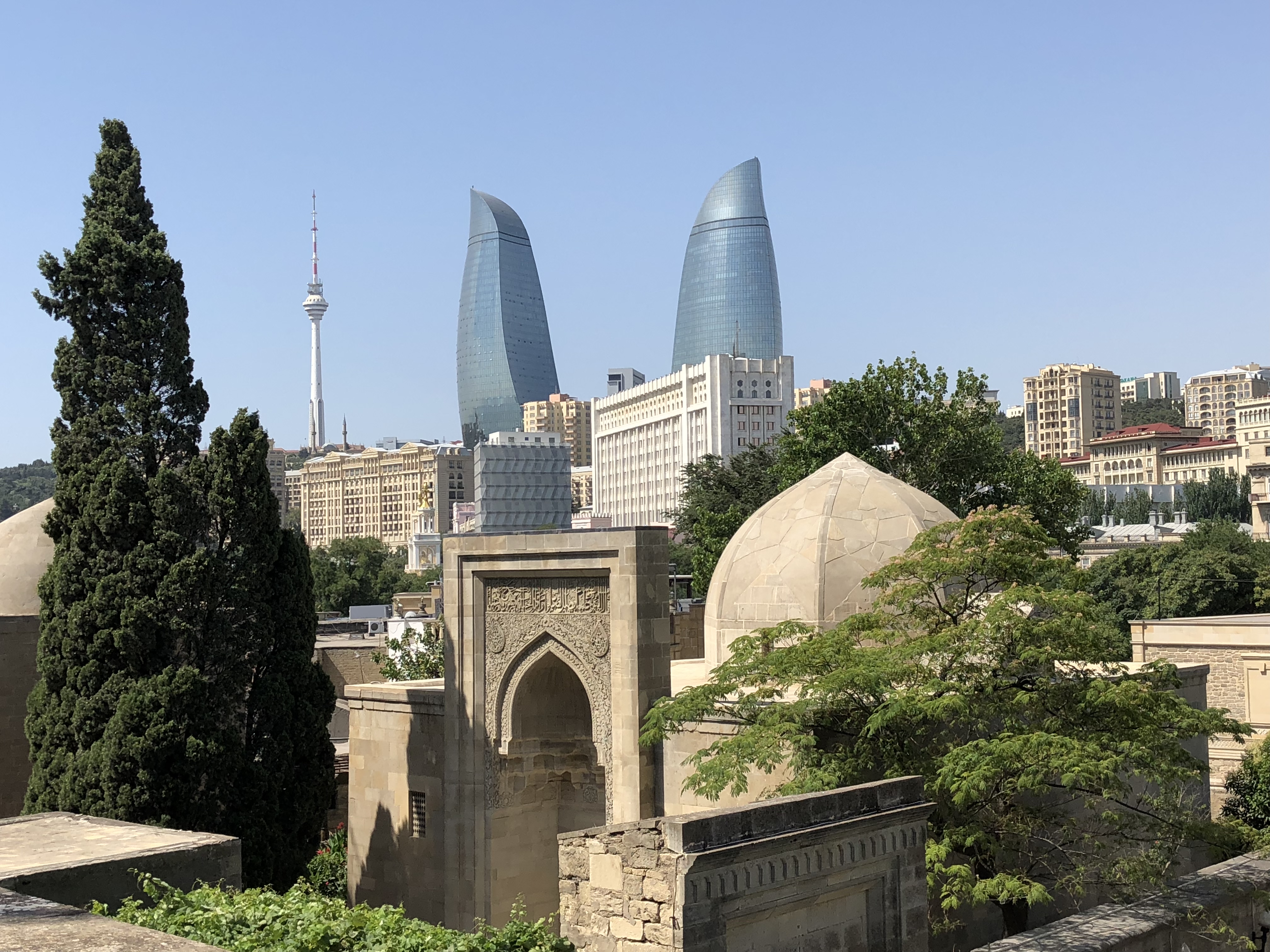
Baku is one capital for which I fell hard and its multiple personalities only gave me three times more of the city to love. Baku’s architecture is a personification of these three sides of the city and can act as a guide through the history of the city. Personality #1 is the ancient city of Baku, mostly found within the UNESCO proclaimed İçərişəhər, or the old walled city; Personality #2 reveals the Soviet occupation of Azerbaijan that came to a head with the tragic events of Black January in 1990; Personality #3 is modern Baku, full of incredible Meet-the-Jetsons-style buildings. The city isn’t demarcated into three separate areas, but rather is swirled together, meaning one minute you are walking from 1952 to 1236 to 2008.
İçərişəhər
In 2000 İçərişəhər, including Qız Qalası (The Maiden Tower) and Şirvanşahlar Sarayı (The Palace of the Shirvanshahs) was declared an UNESCO world heritage site. Though the earliest records of İçərişəhər date from the 7th Century, most what currently stands today was built between the 12th and 16th Centuries.
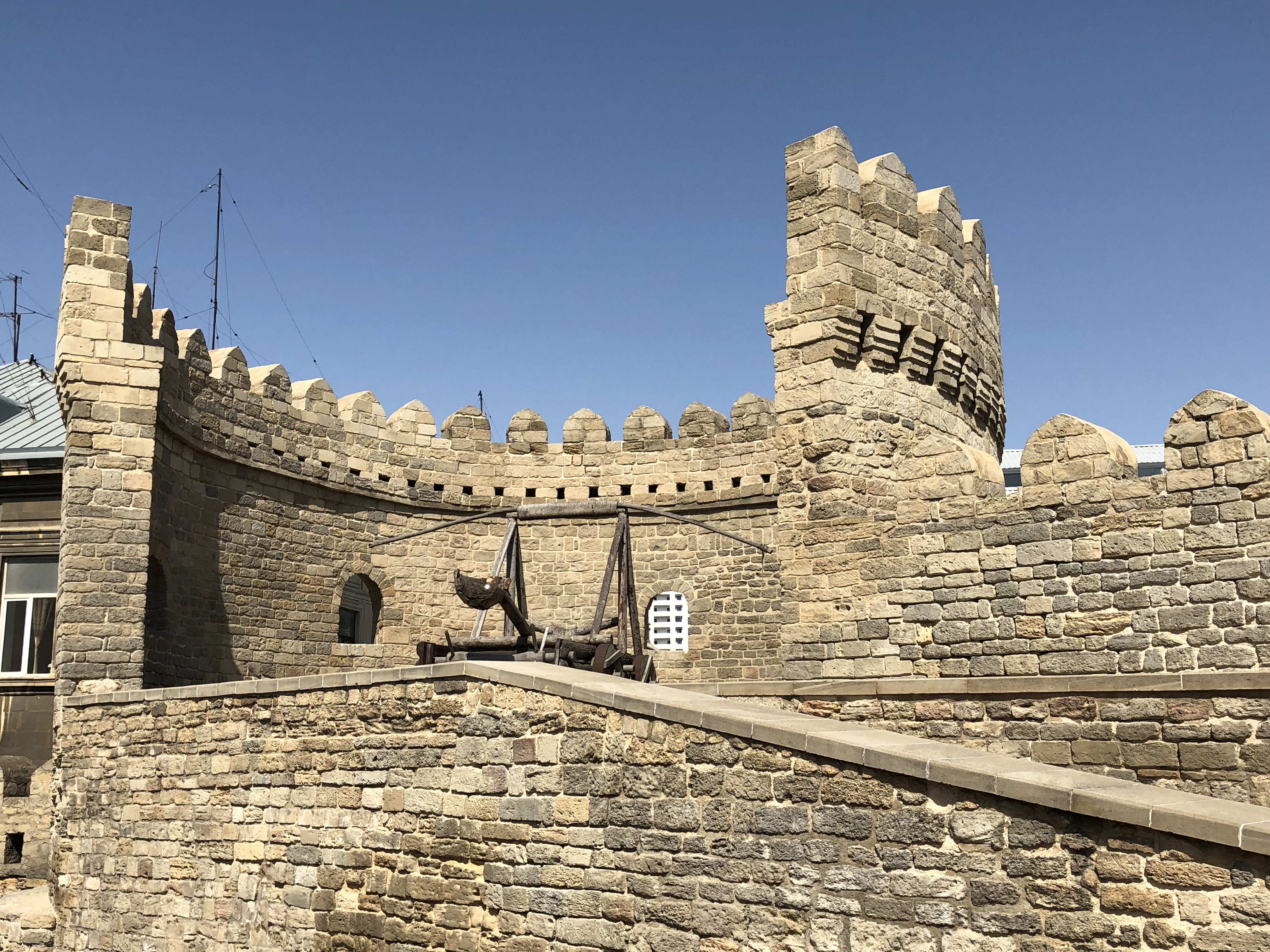
Qız Qalası
Azerbaijanis in Baku will probably tell you that Qız Qalası (The Maiden Tower) is the most important symbol of the city. Most historians believe that the current structure of Qız Qalası dates from the 12th Century, although the origins of the name and purpose of the tower are still in dispute. There are legends that tell of a virgin in the tower who saved the city from destruction, while others surmise that it was known as the The Maiden Tower because it eluded capture by any enemy, thereby maintaining its “maidenhood.” Some insist that it was constructed as a defensive tower, but there are no holes in walls to allow for archers to hold off intruders. Still other historians claim the structure functioned as a Zoroastrian temple or as a center for astronomy (the two ideas may not be mutually exclusive).
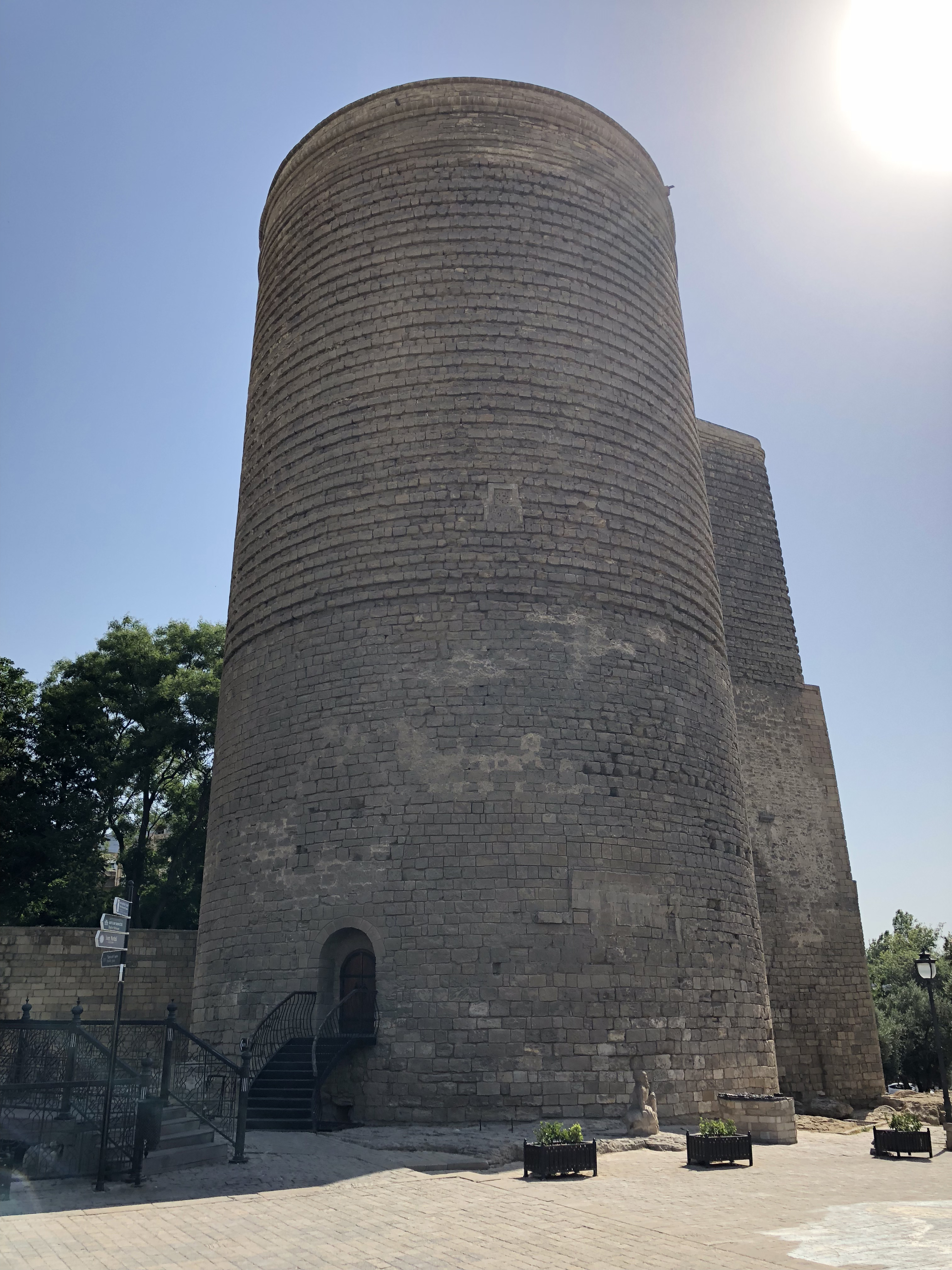
The inside of Qız Qalası has been turned into a museum spread out over several floors, each of which lay out evidence for the different theories of the tower’s historical use. The workers were very friendly and answered all my questions about disputed history of Qız Qalası. Of course, the views of Baku on the upper deck are worth the price of admission alone.
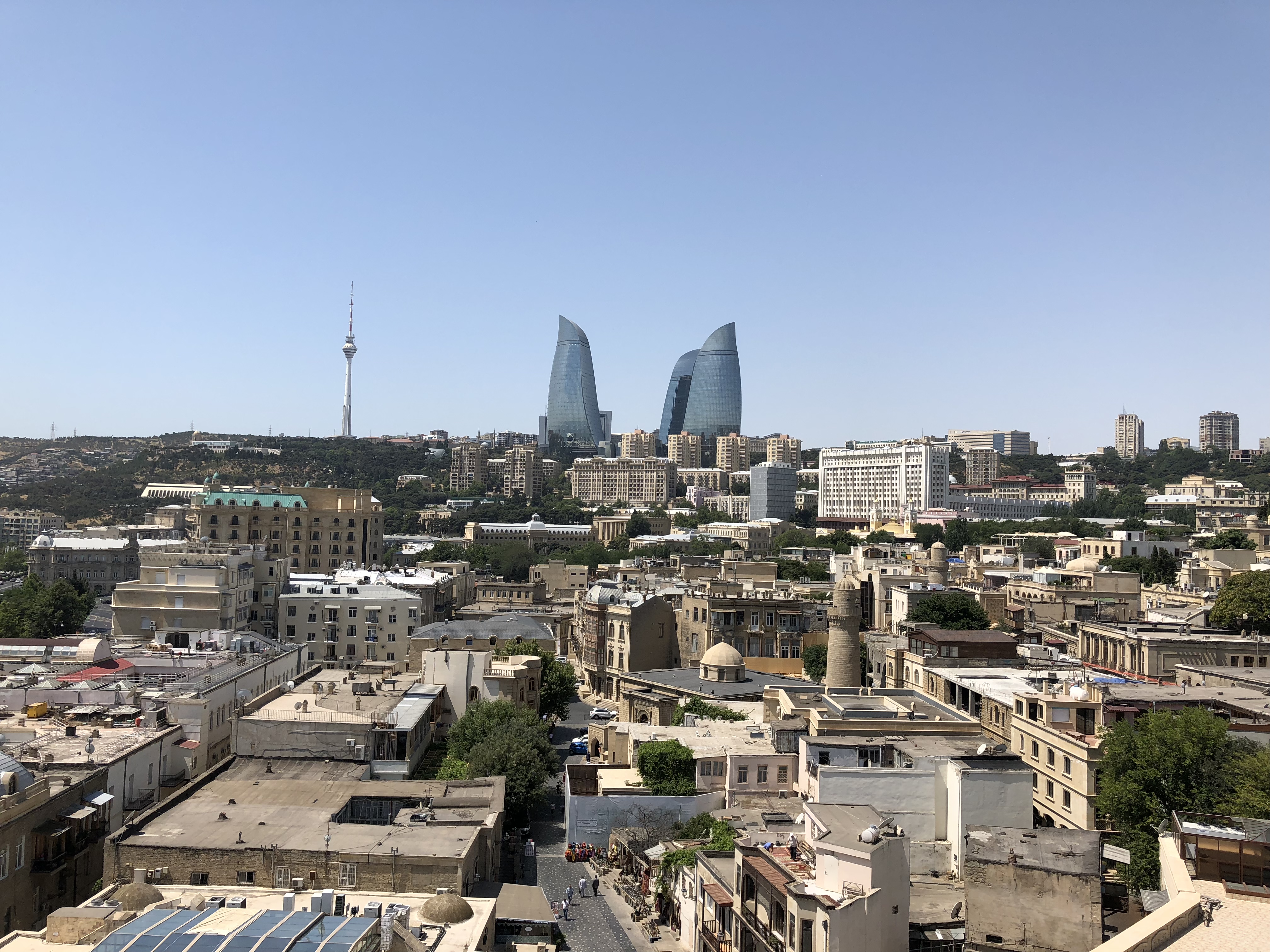
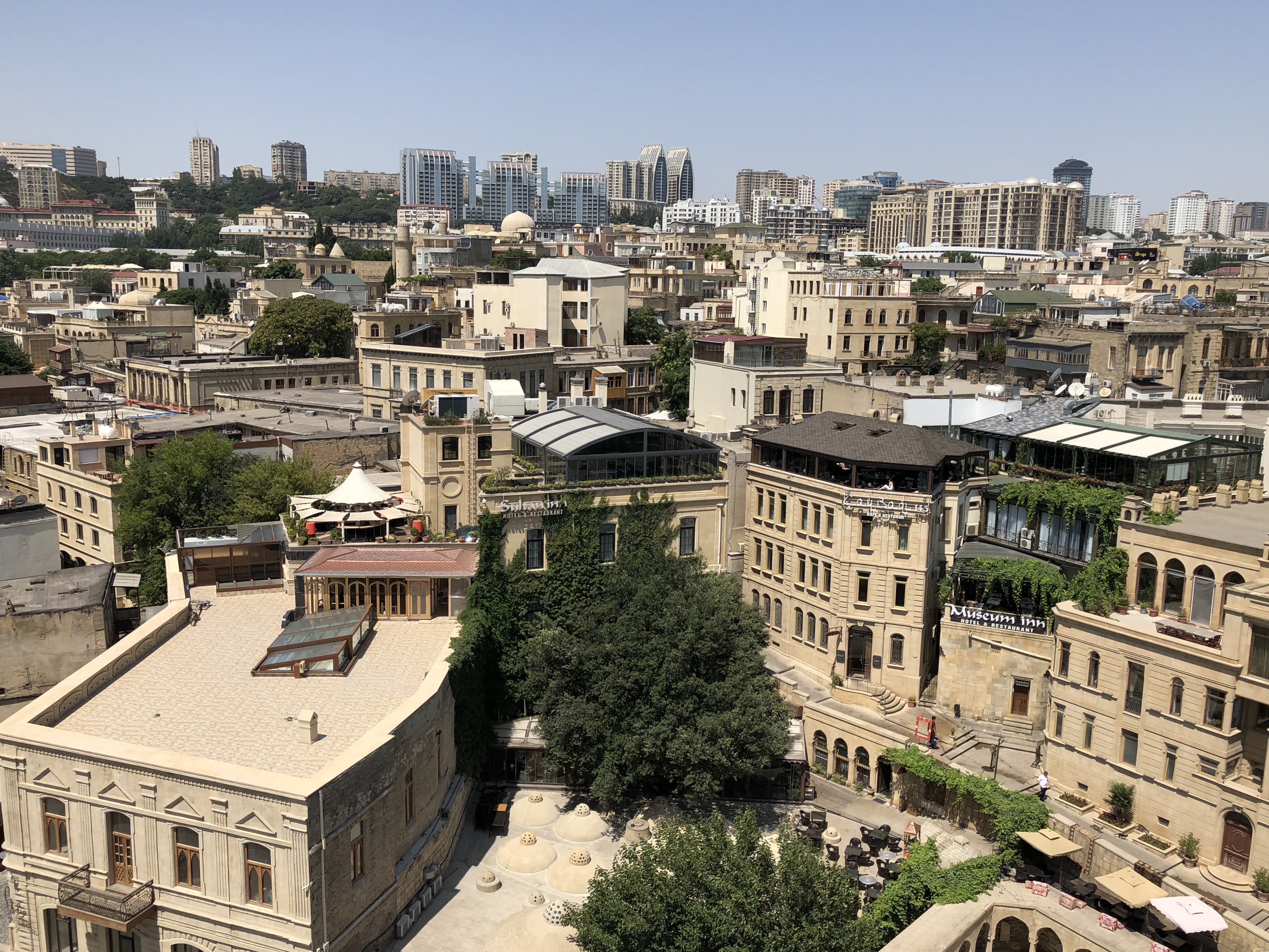
Cümə Məscidi (Juma Mosque)
Cümə Məscidi or The Cathedral Mosque was built on the site of a Zoroastrian temple in the 12th Century and is located less than five minutes from Qız Qalası. The mosque underwent significant restoration in 1899 and is free to enter after the removal of your shoes; men enter from one set of doors and women from a separate entrance around the side. The exterior features gorgeous stonework that only rivals the detailed paintings on the interior walls.
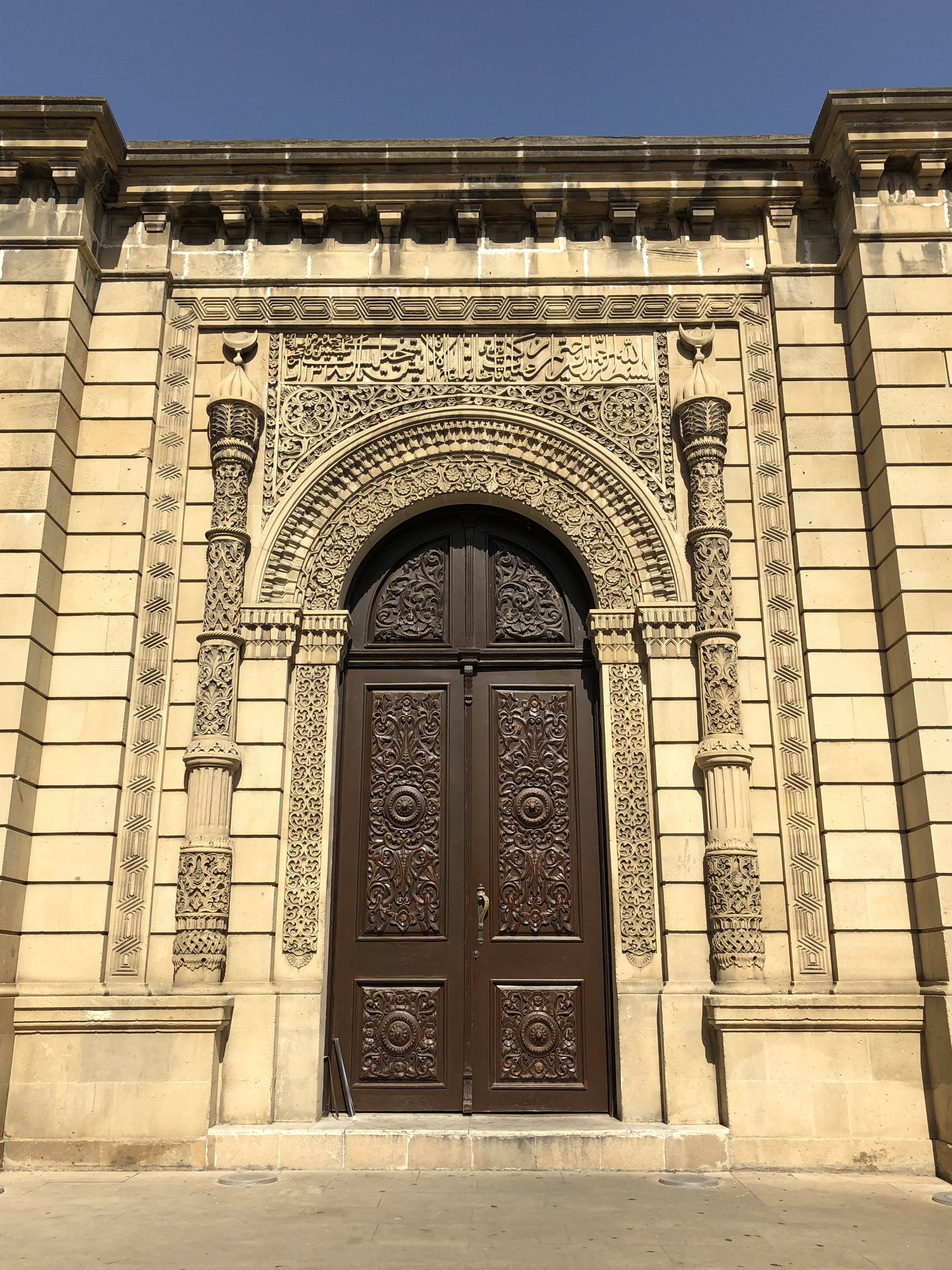
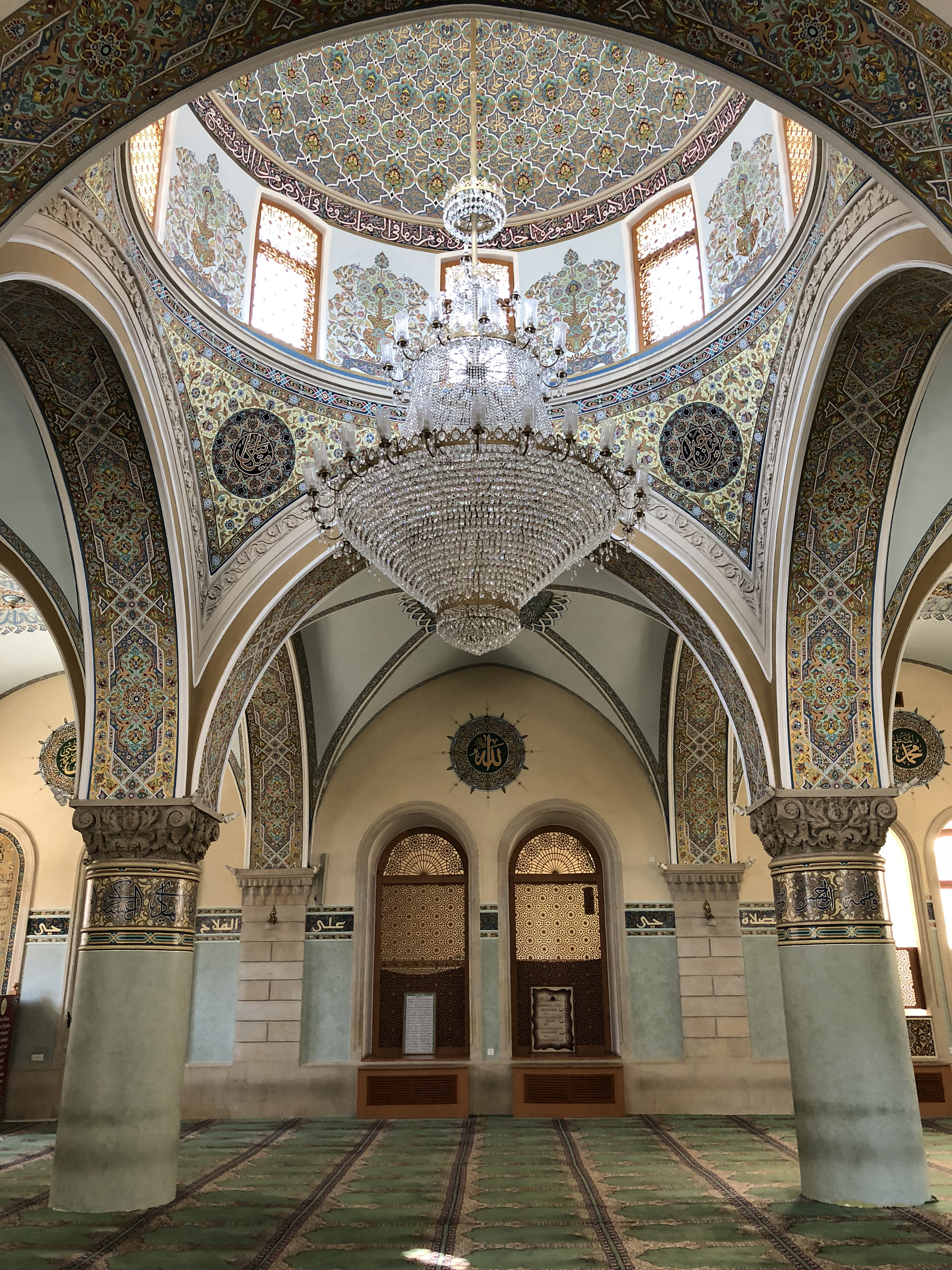
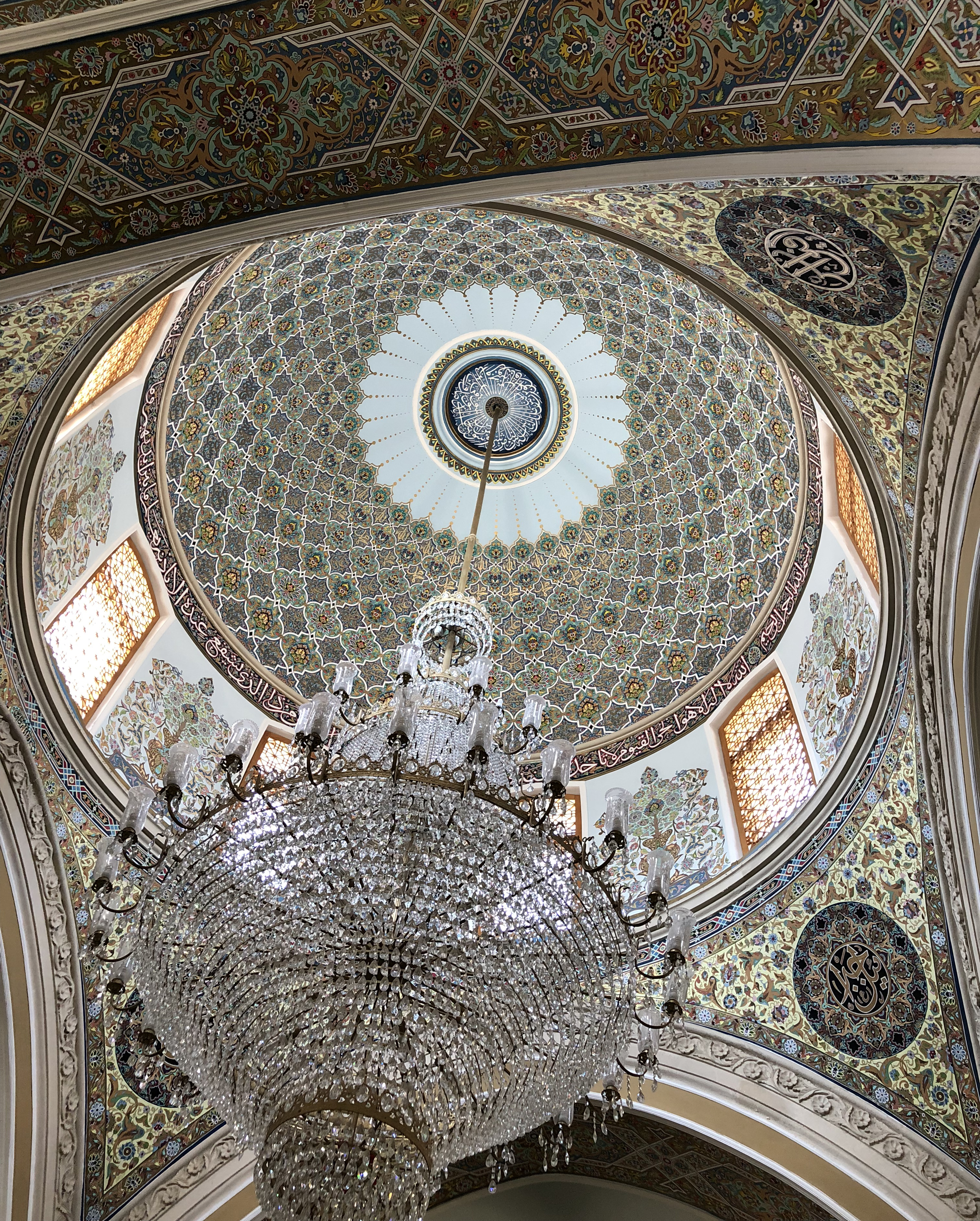
Şirvanşahlar Sarayı (The Palace of the Shirvanshahs)
The Shirvanshahs ruled Azerbaijan from roughly the 9th Century through the 16th Century; Şirvanşahlar Sarayı acted as their royal residence for the last two centuries of their reign. The palace has been turned into a museum that chronicles the history of the Shahs and how they laid the foundation for the metropolis Baku has become today. (Until the 15th Century, Shemakha had been the capital of the Shirvanshah Dynasty, but the city was extremely prone to earthquakes and in 1411 construction began on Şirvanşahlar Sarayı when the capital shifted to Baku. And no earthquakes here- Baku fun fact: at 92 feet below sea level, Baku is the lowest lying capital in the world.)
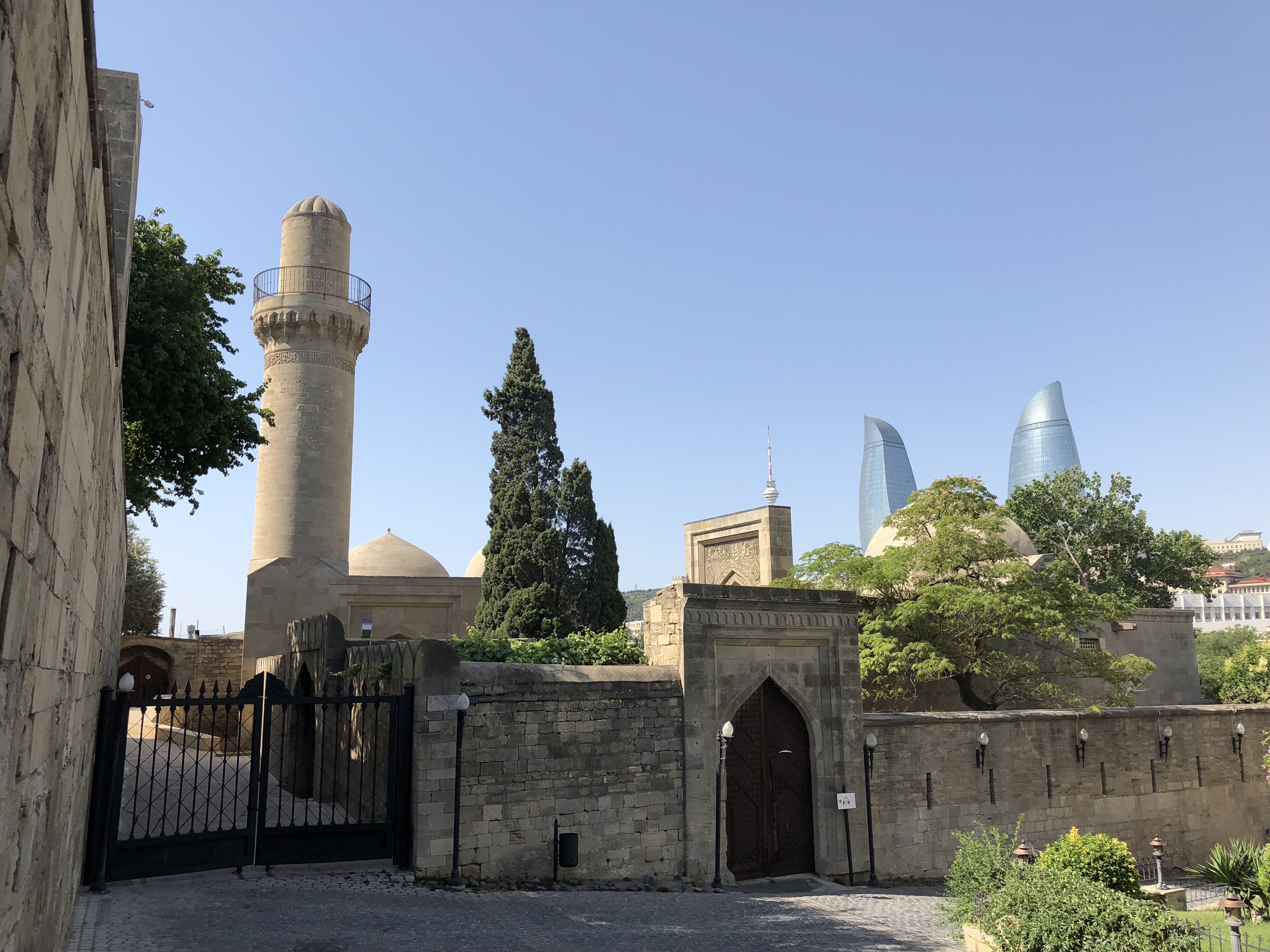
The entire complex includes the palace proper, as well as a mosque, several mausoleums and a bath house/water supply system that is still being excavated. After the fall of the Shirvanshah Dynasty the palace changed hands several times; most of the outer palace walls were completely destroyed, as were many of the inner palace arches when the Russian army used the building as a warehouse. In 1992, a major rehabilitation of the palace complex commenced which is still ongoing today.
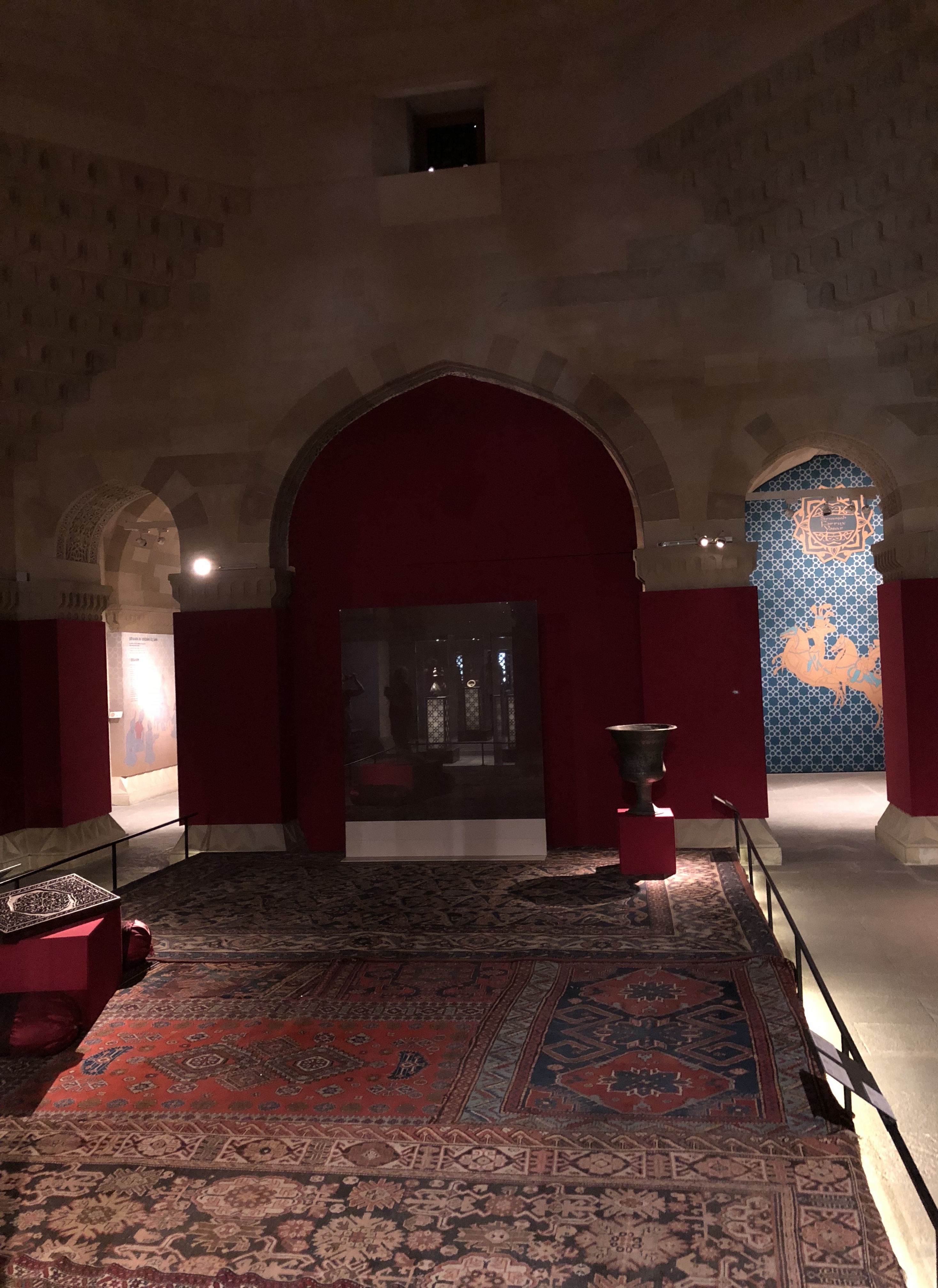
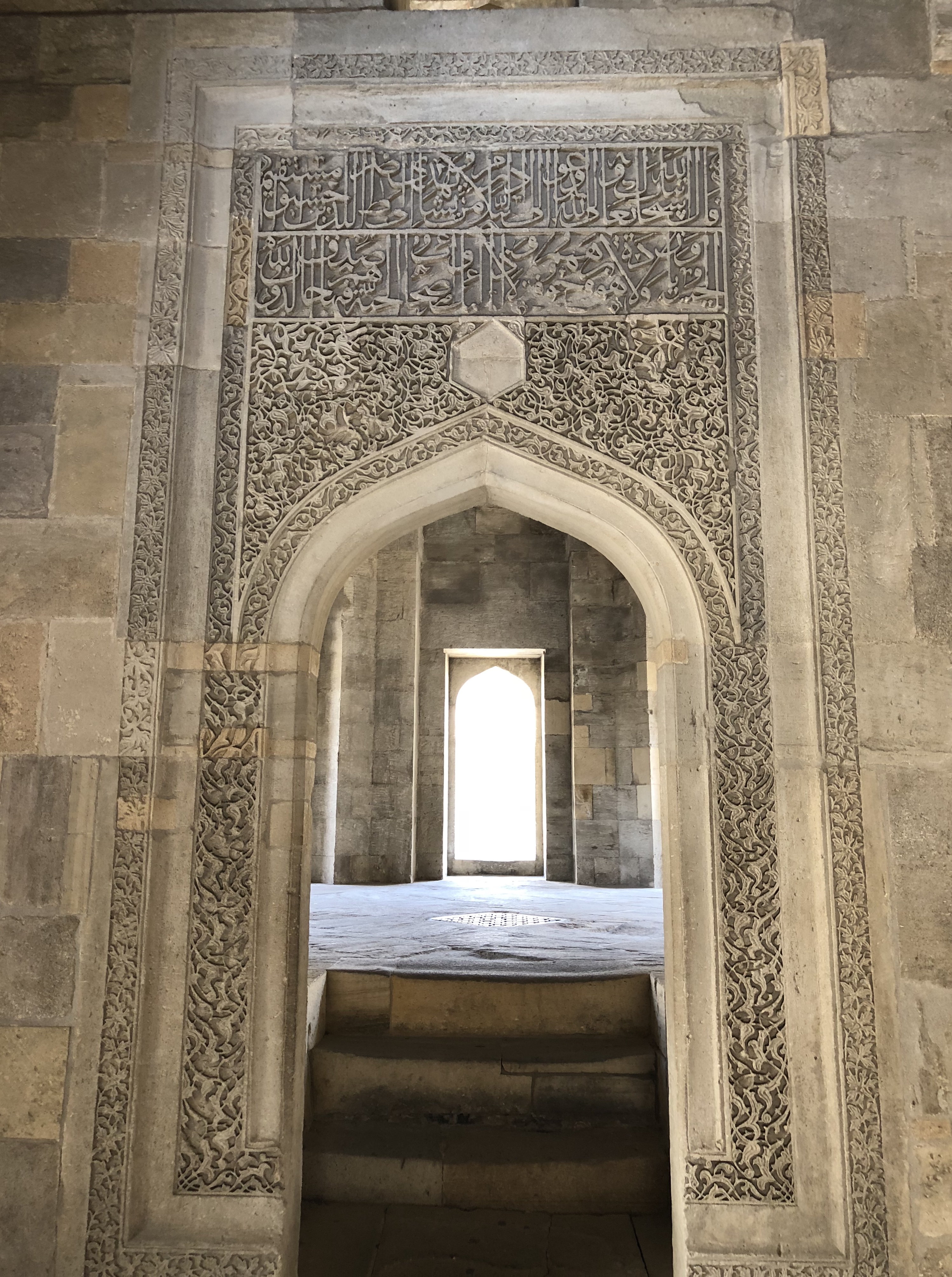
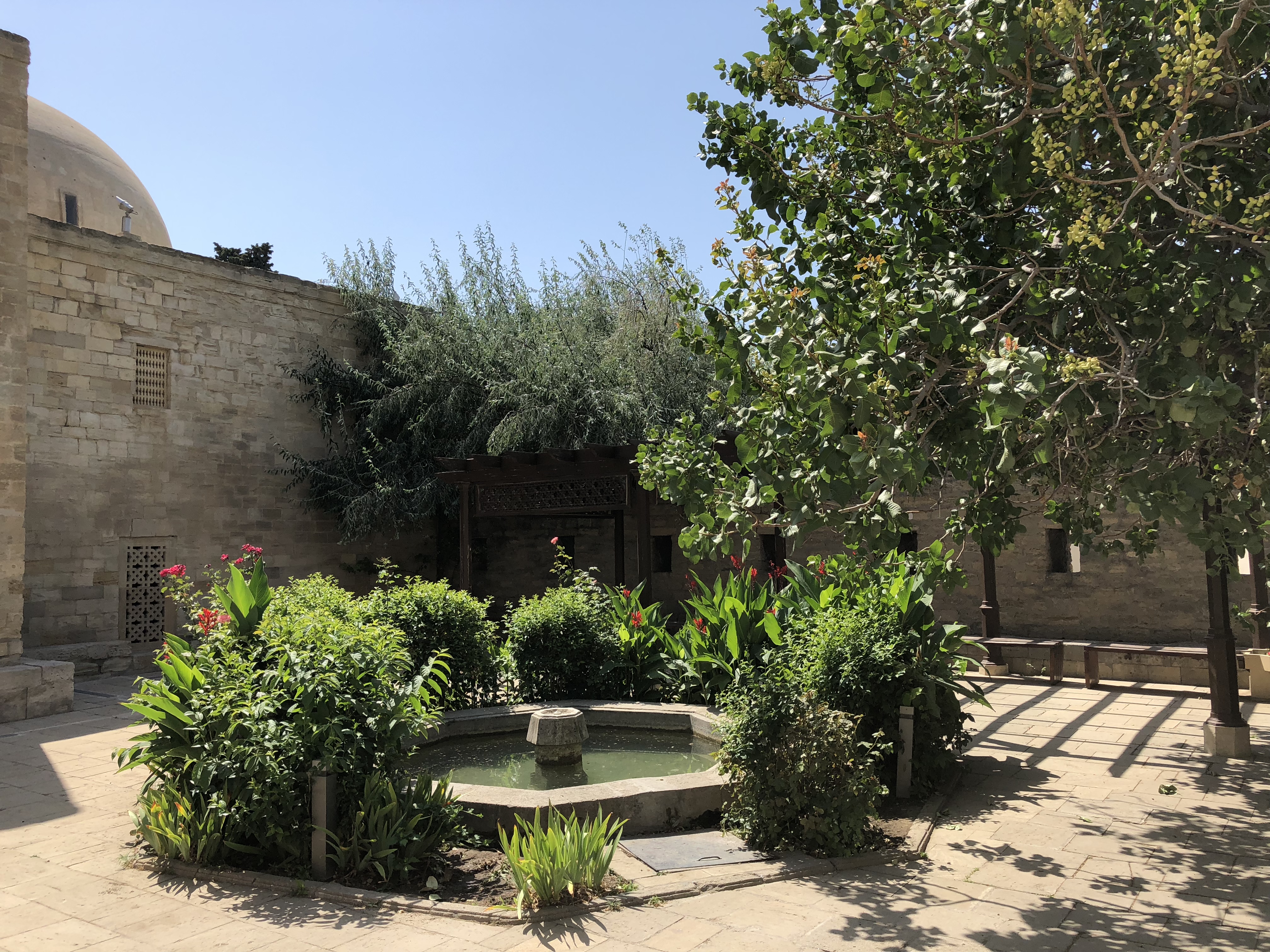
Soviet Azerbaijan
Before we quite get to Azerbaijan in Soviet times, 1918 saw Azerbaijan declare independence and for approximately 23 months Azerbaijanis were able to govern themselves. The good times were not to last as Azerbaijan, and Baku in particular, have always been rich in oil and Lenin’s newly formed government knew they needed access to this oil reserve in order to survive. In 1920 the Red Army invaded Azerbaijan; 20,000 Azerbaijani soldiers died in the ensuing fight, but Azerbaijan fell to the Soviets and remained an SSR until 1991 when it re-established its sovereignty.
Hökümət Evi (House of Goverment)
In 1936, construction began on the Baku Soviet Palace, which today has been remained as Hökümət Evi (House of Government). It took 16 years to complete the massive building, which officially opened in 1952. The square created by the three sides of the building, once known as Lenin Square (with obligatory Lenin statue, naturally), was remained Freedom Square in 1991; the statue of Lenin was promptly removed and replaced with an Azerbaijani flag. Nowadays Hökümət Evi holds the offices of several governmental ministries.
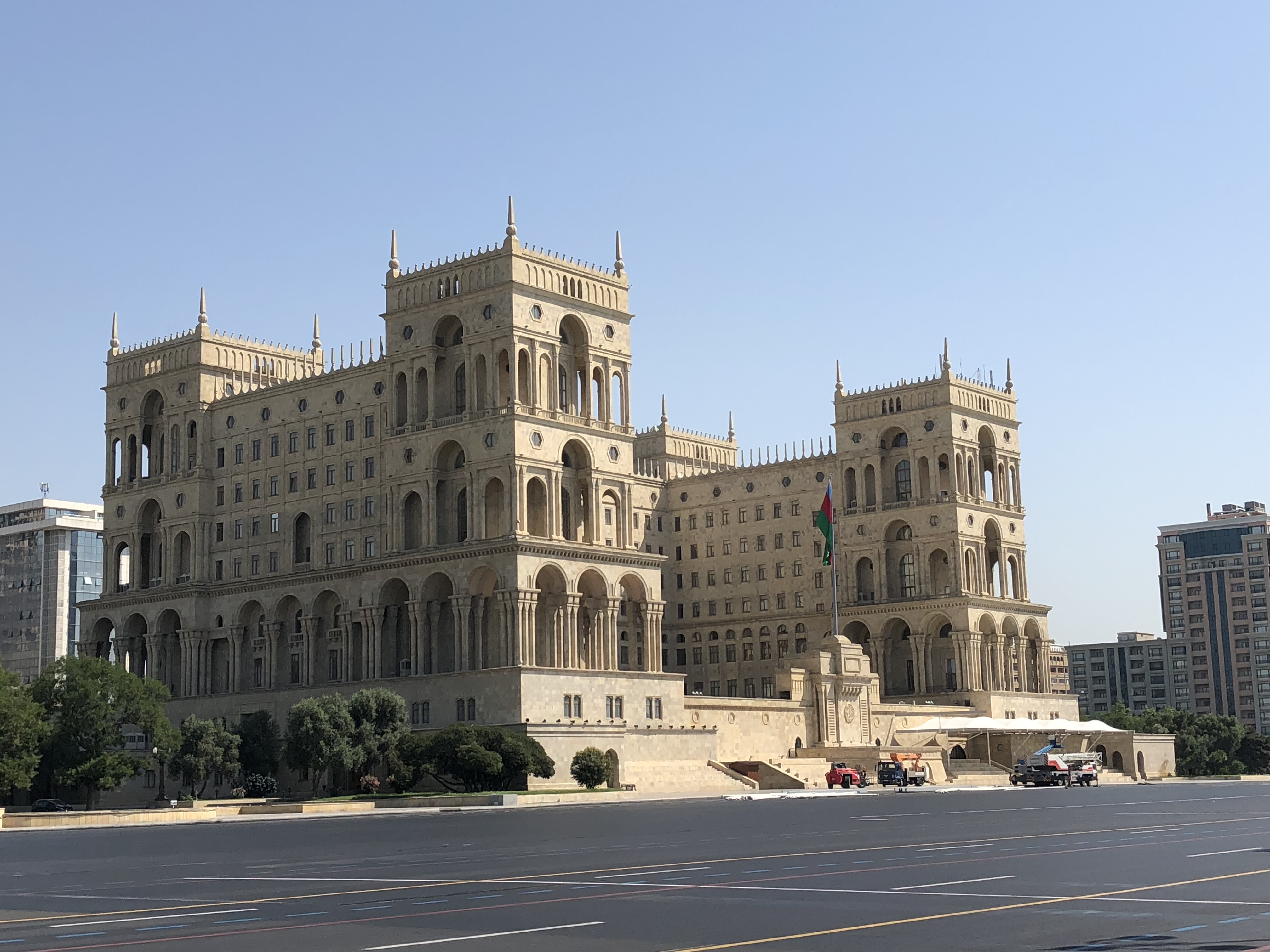
The real problem with Hökümət Evi is trying to get the entire building in one photo!
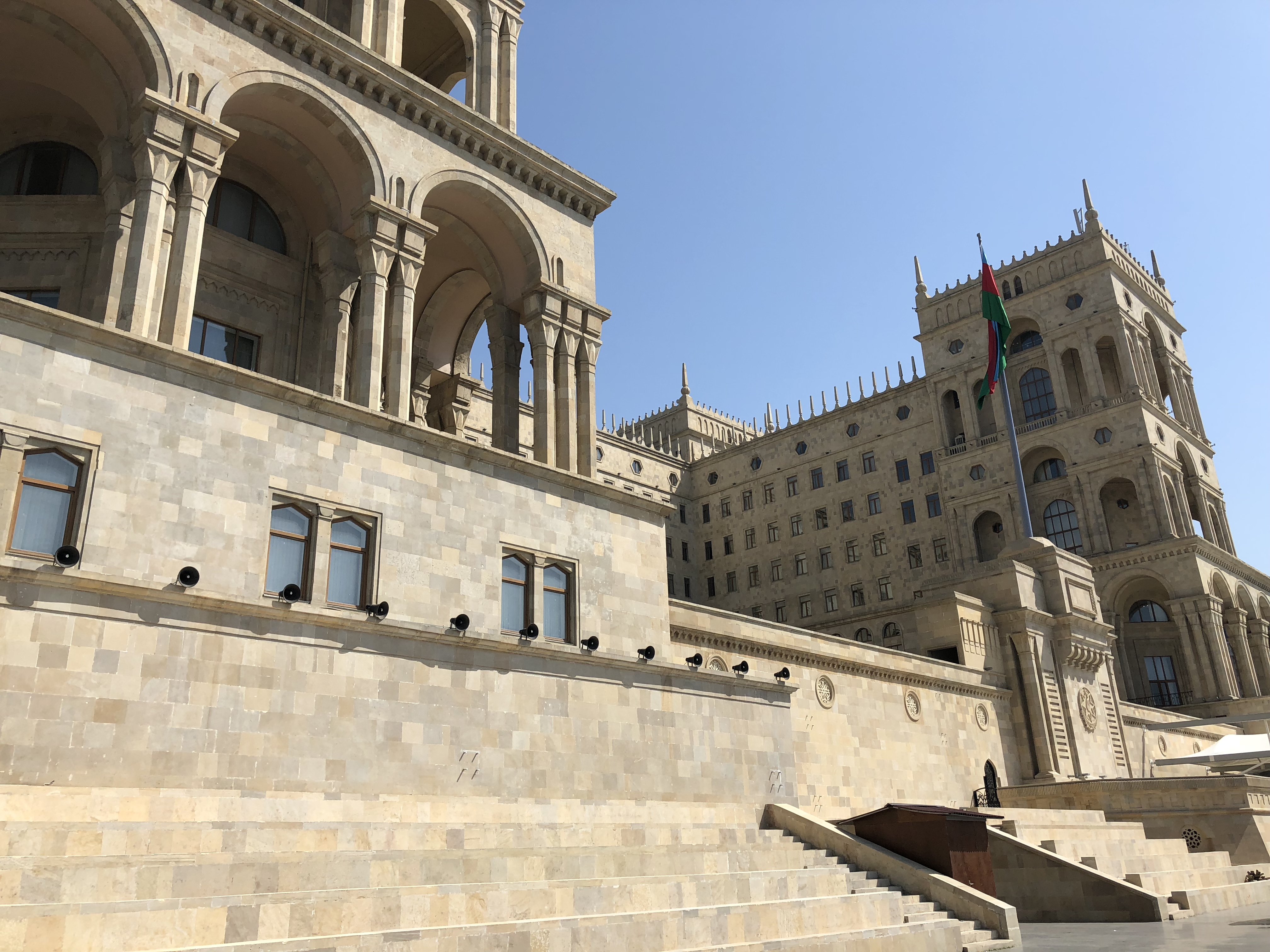
In January 1990 the political climate in Azerbaijan was reaching a breaking point. Disagreements with Armenia over who controlled the territory of Nagorno-Karabakh, which is still disputed by both Armenia and Azerbaijan to this day, caused military flare-ups between the two nations. On top of this, the wish for an independent Azerbaijan was reaching a fevered pitch. The Popular Front of Azerbaijan began organizing riots and protests in Baku, to which Gorbachev responded by declaring a state of emergency in the SSR capital and sending in Soviet troops. The exact number of casualties is unknown, but around 130-170 Azerbaijani citizens were killed and 700-800 were injured in Baku between January 19th and 20th. Black January, as these events later came to be known by, acted as the point of no return for Azerbaijan re-establishing its independence.
Modern Baku
There’s no greater proof that Azerbaijan has broken the chains of its Soviet occupation than in Baku’s post-modern architecture. The new Baku is radical and not about to follow any rules. If the Soviets loved their concrete block apartment buildings then Azerbaijani architects were going to head in the opposite direction. Buildings look like pieces of pulled taffy or futuristic spaceships- impossible curves and contours are de rigeur- and of all the impressive structures of new Baku, the Heydər Əliyev Mərkəzi (Heydər Əliyev Centre) is by far the most jaw-dropping.
Heydər Əliyev Mərkəzi (Heydər Əliyev Centre)
Heyər Əliyev was the president of Azerbaijan from 1993 until 2003 and his legacy is still quite potent in Baku’s landscape. The cultural center that bears his name opened in 2012 and houses several museums, a concert hall and gallery. As you walk around the building, it magically appears to morph into different shapes before you eyes. No photo will ever do it justice, but I’ll give it a try with a few different perspectives:
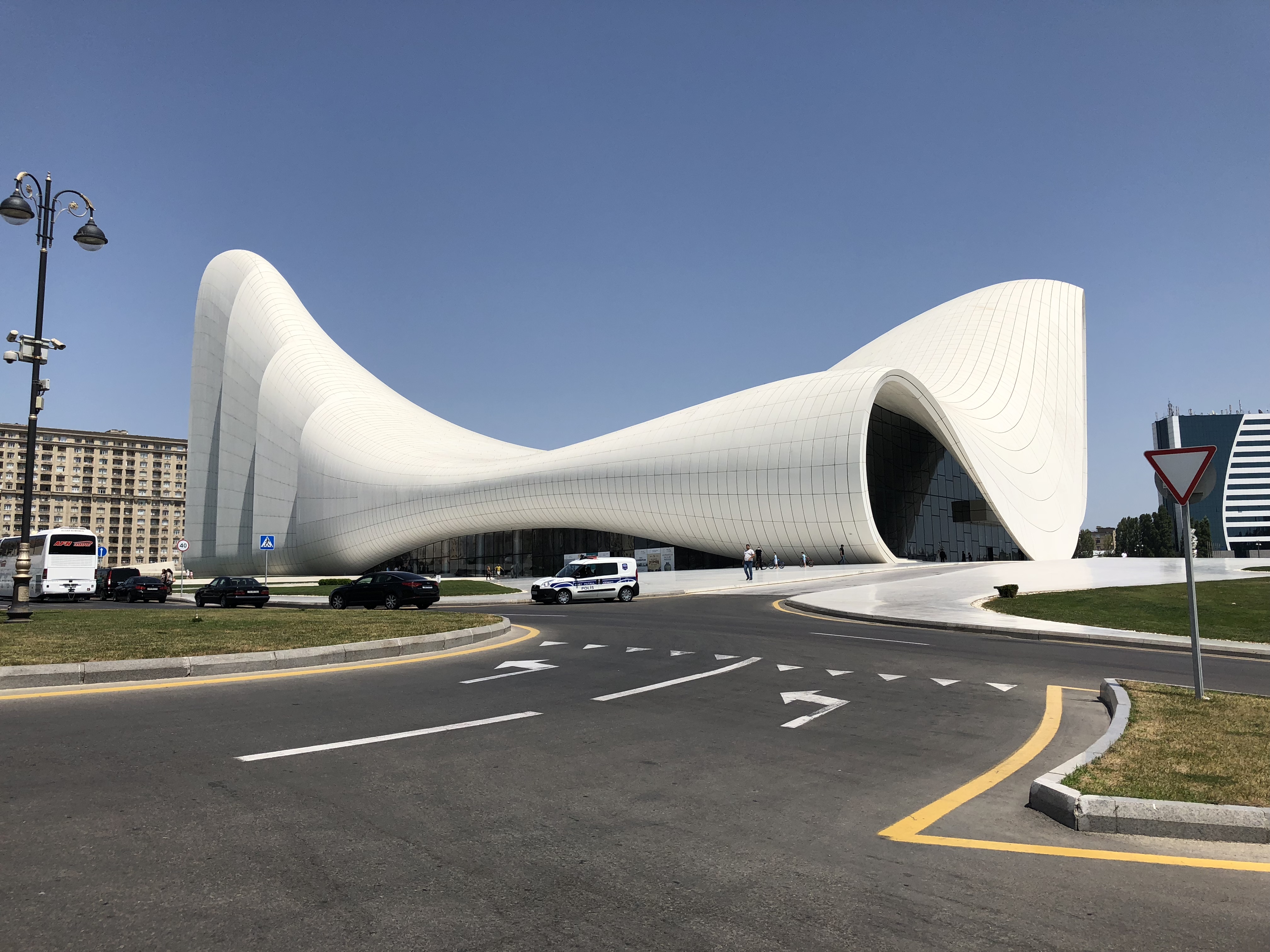
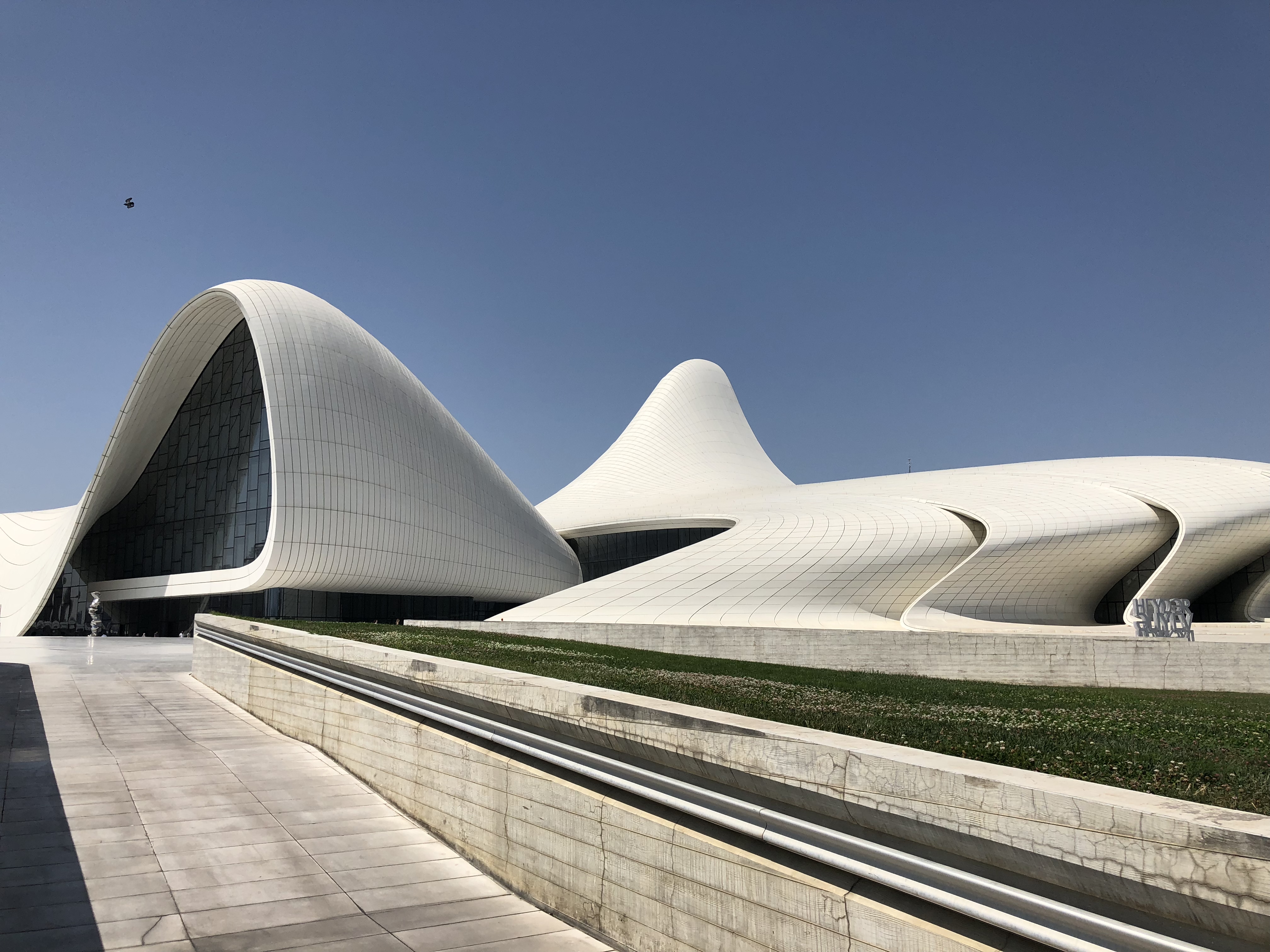
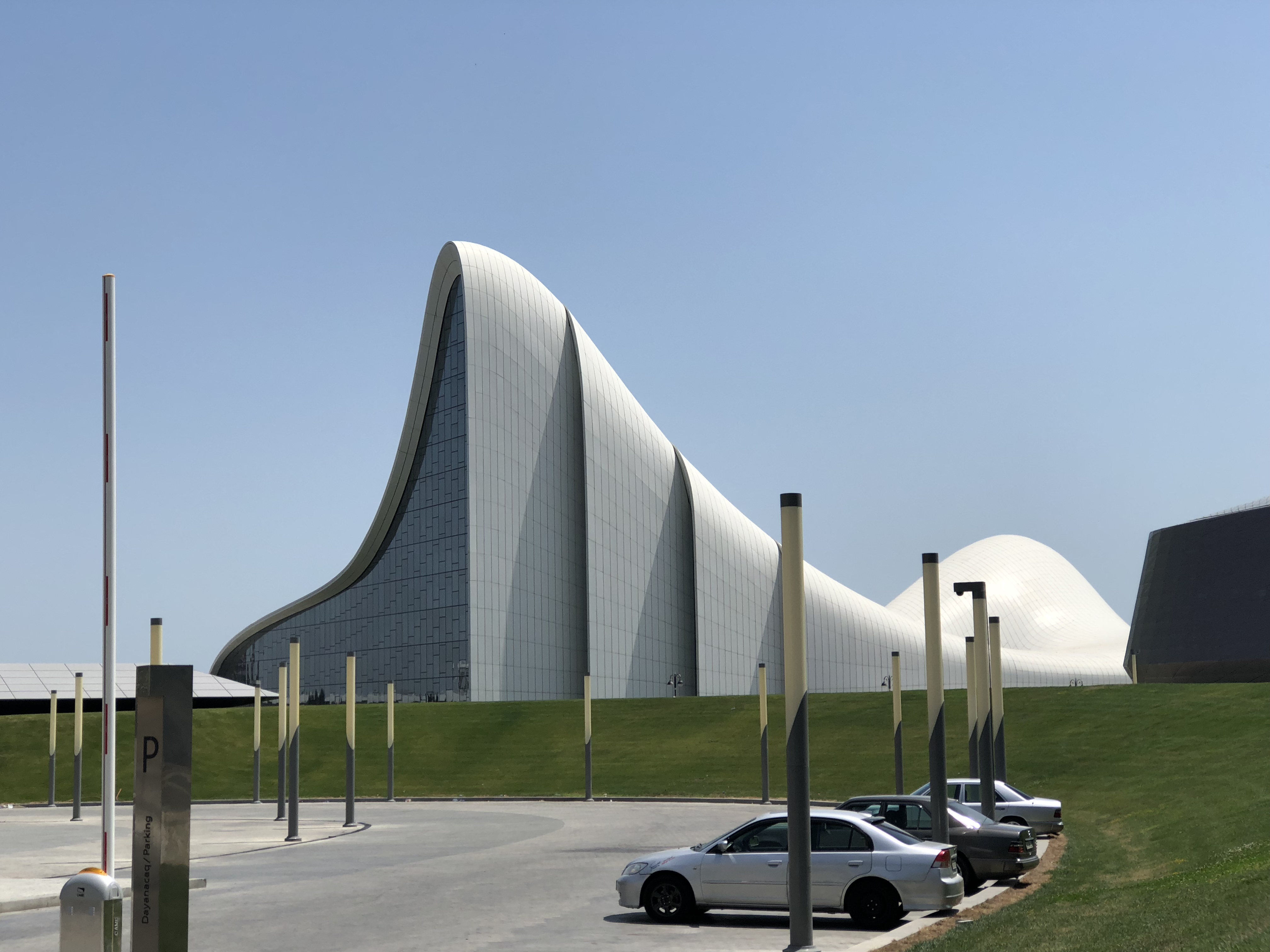
Flame Towers
Although the Heydər Əliyev Mərkəzi is the coolest building in Baku, the Flame Towers may be the most talked about; easily seen from all over the capital, the trio of towers put on a light show each evening that would make the billboards in Times Square blush. Construction of the towers lasted from 2007 t0 2012 and cost an estimated 350 million dollars. They now hold hotels, offices and apartments.
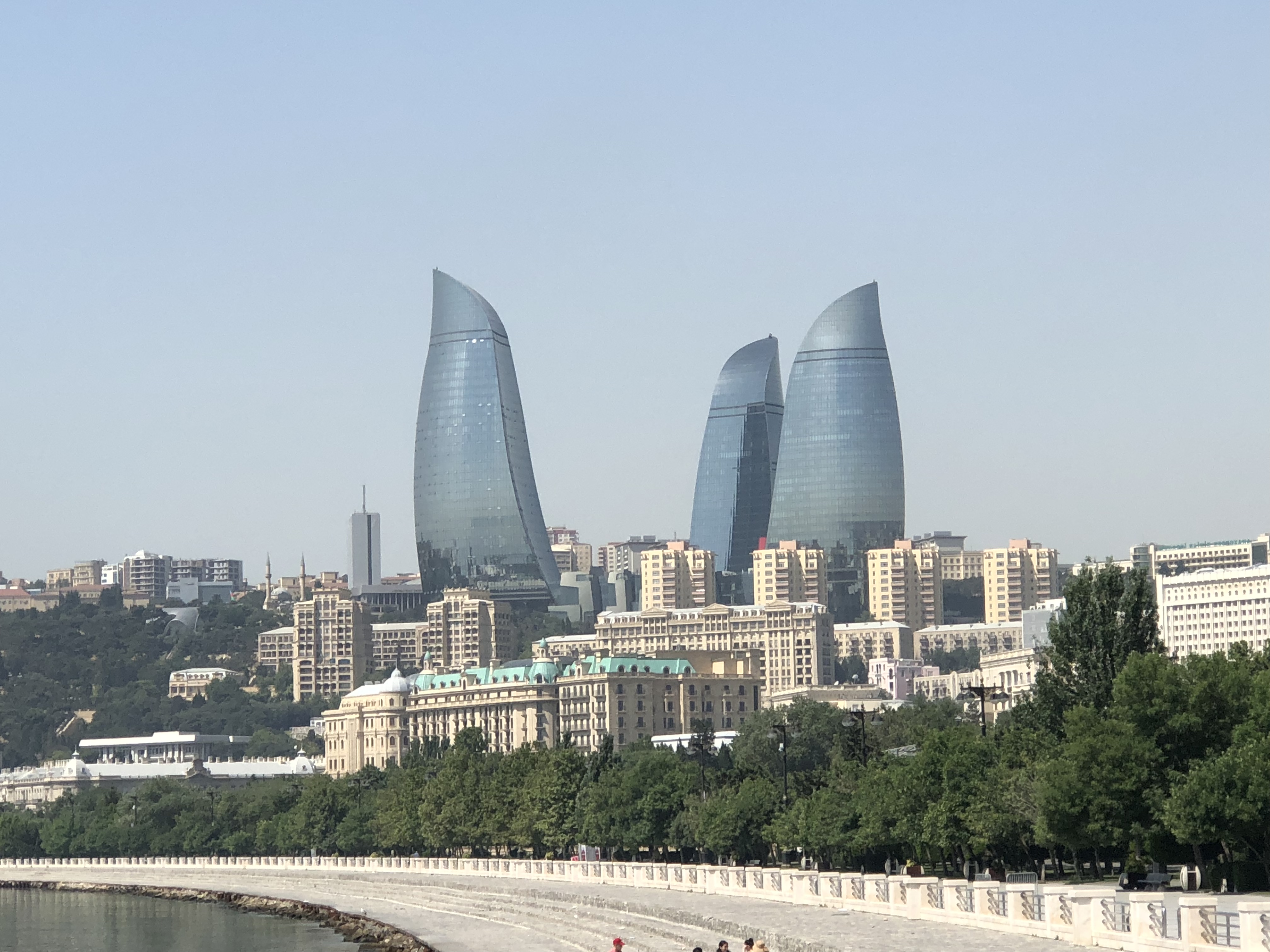
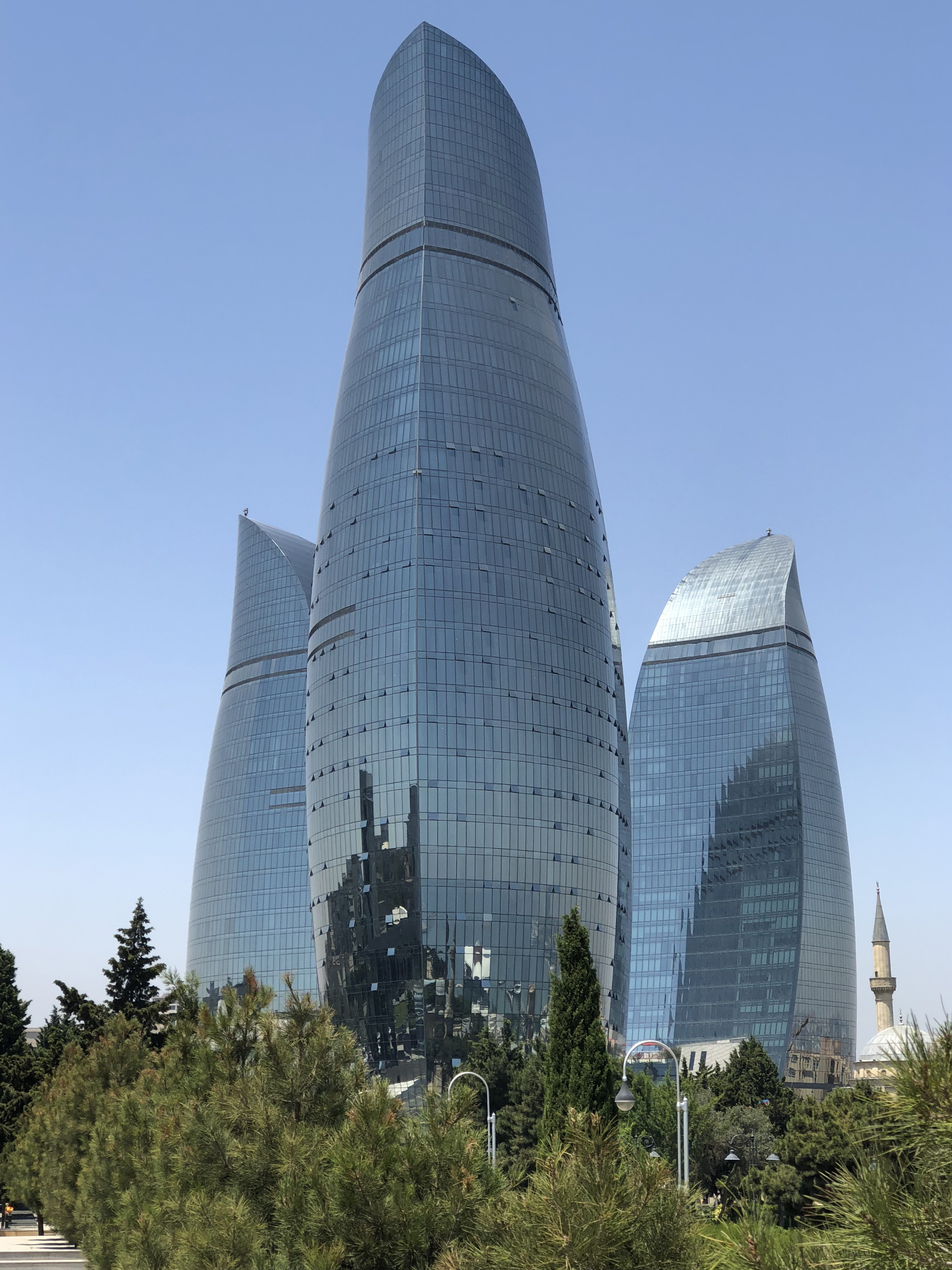
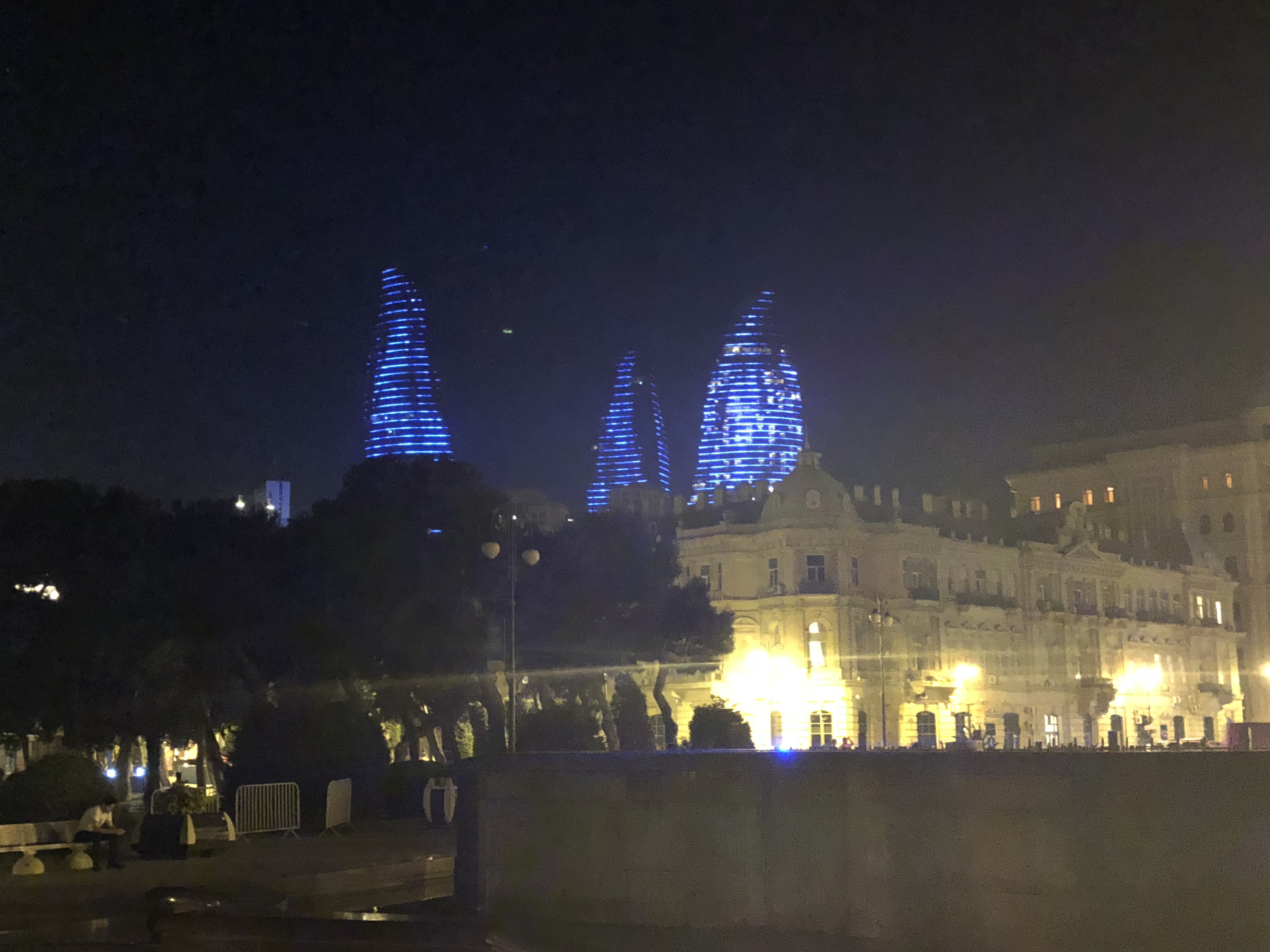
It’s fascinating to walk around Baku and see how the city transformed from the ancient capital of the Shirvanshahs to a Soviet satellite and finally blossomed into the modern marvel it is today. An architectural adventure is the best way to get an introduction to Azerbaijan’s fascinating capital city.

